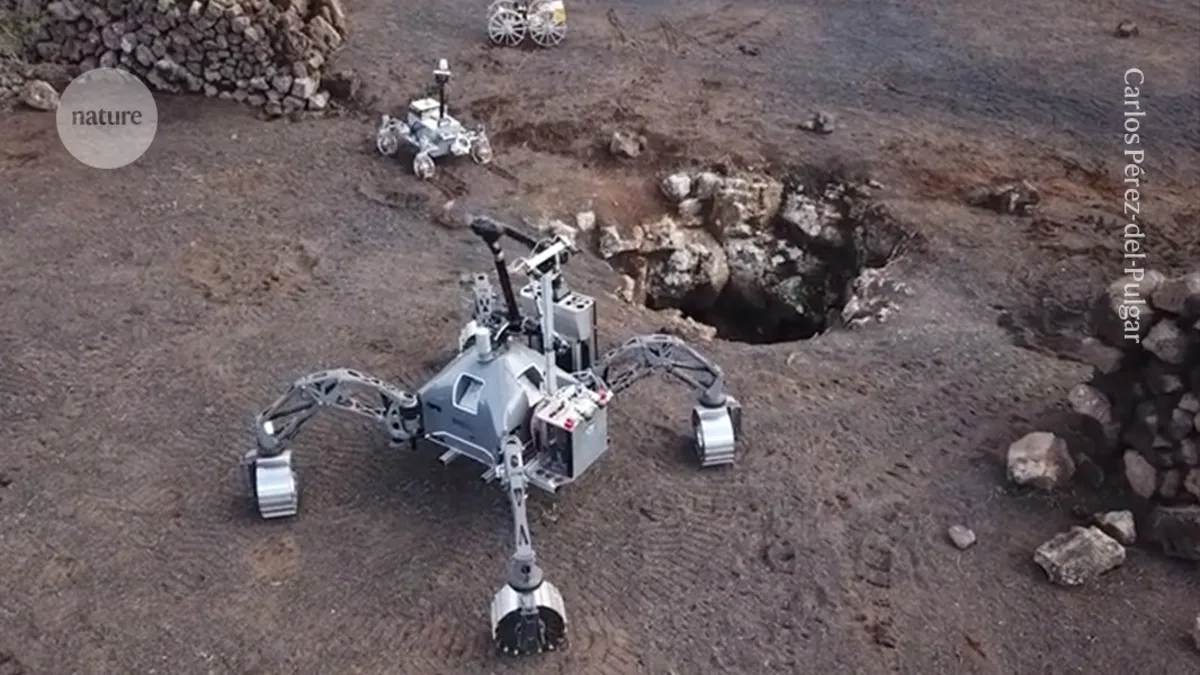
To unlock the mysteries of our solar system, researchers propose sending a team of specialized robots to explore volcanic tunnels on the Moon and Mars. This innovative approach was recently demonstrated in tests conducted on Lanzarote, a volcanic island in Spain. During these experiments, one rover assisted another in rappelling down a vertical shaft into a subterranean cave, showcasing the potential for complex underground exploration in extraterrestrial environments.
According to Jennifer Blank, a geochemist at the Blue Marble Space Institute of Science in Moffett Field, California, who has contributed to NASA's Curiosity rover, these tests represent “a significant step toward enabling future lunar or Martian cave missions.” The findings were published in the latest issue of Science Robotics, highlighting the promise of robotic exploration in these challenging terrains.
Volcanic eruptions are known to create underground tunnels known as lava tubes. These tubes form when rivers of hot lava flow beneath a surface layer that cools and solidifies, leaving behind empty channels once the eruption ceases. Recent satellite surveys have identified extensive lava tubes beneath the surfaces of both Mars and the Moon. These subterranean environments are considered potential havens for future missions, providing safety from cosmic rays, solar storms, and micrometeorites.
“It could be a very good place to find life signatures, and also to place a human habitat,” states Carlos Pérez-del-Pulgar, a roboticist at the University of Malaga in Spain. The exploration of these volcanic tunnels could not only enhance our understanding of other celestial bodies but also contribute to the establishment of sustainable outposts for human habitation.
Pérez-del-Pulgar and his team devised a comprehensive strategy to evaluate their robots' capability to explore a lava cave in Lanzarote. The testing consisted of four distinct phases. Initially, two rovers mapped the surface surrounding the cave's entrance. Following this, a small, cubical probe—akin to a cubesat—was deployed from one of the rovers and dropped into the cave to create a detailed 3D map of the entrance.
The information gathered from this mapping exercise enabled the rovers to effectively plan the best route for a safe descent into the cave, demonstrating the potential for robotic collaboration in space exploration.
The successful tests conducted on Lanzarote mark a crucial advancement in our quest to explore volcanic tunnels on the Moon and Mars. As researchers refine their robotic technologies and strategies, the dream of establishing human habitats and discovering signs of life beyond Earth draws ever closer.